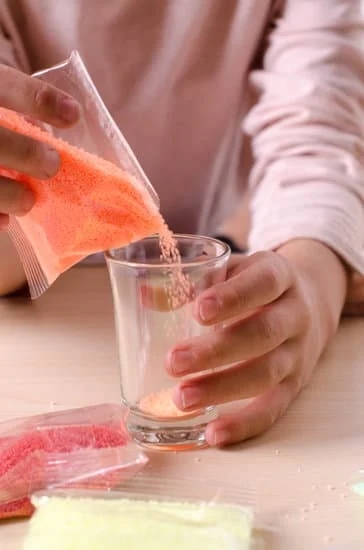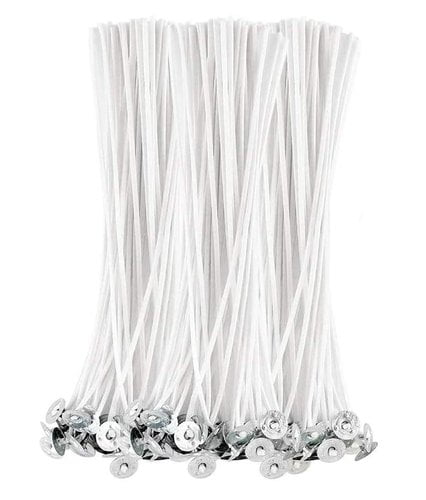Candle making is a popular and rewarding hobby that allows individuals to create their own beautiful and fragrant candles. One of the most crucial aspects of candle making is keeping the wick in place to ensure a clean and even burn. In this article, we will explore the various factors that contribute to successful wick placement and how to ensure that your candles burn just the way you want them to.
Choosing the right type of wick for your candles is essential in achieving optimal burning results. Different wicks are designed for specific types of wax and containers, so it’s important to select the appropriate one for your candle making project. Additionally, preparing the container for wick placement is a key step in ensuring that the wick stays in place throughout the burning process. This involves properly centering and securing the wick before pouring the wax.
Using tools and techniques to secure the wick in place is another important aspect of successful candle making. From wick holders to skewers, there are various methods to keep the wick centered and straight during the pouring process.
Additionally, understanding how adhesives work and how to use them effectively can greatly contribute to a well-placed wick. Throughout this article, we will explore troubleshooting common issues with wick placement and provide safety tips for handling and securing the wick during candle making.
Choosing the Right Type of Wick for Your Candles
When it comes to making candles, choosing the right type of wick is essential to ensuring a successful finished product. The type of wick you use will depend on several factors, including the type of wax you are using, the size and shape of the candle, and whether you want a slow or fast burn.
Cotton wicks are typically the most popular choice for candle making, as they offer a clean and even burn. However, there are different types of cotton wicks available, each designed for specific types of wax and candle sizes. For example, large diameter candles may require a thicker wick to ensure an even burn.
When selecting a wick for your candles, it’s important to consider the manufacturer’s recommendations for the specific type of wax you are using. Different waxes have different melting points and characteristics that can affect how the wick burns. By following these recommendations, you can ensure that your candles burn cleanly and evenly.
In addition to cotton wicks, there are also other options such as wood or metal core wicks. These alternative wicks offer their own unique burning properties and may be preferred for certain types of candles. It’s important to research and experiment with different types of wicks to find which one works best for your specific candle making needs.
| Type of Wick | Use |
|---|---|
| Cotton Wicks | Clean and even burn |
| Wood or Metal Core Wicks | Unique burning properties |
Preparing the Container for the Wick Placement
When preparing the container for wick placement in candle making, there are several important steps to follow to ensure that the wick stays in place and burns properly. Here are some tips and techniques to help you achieve successful wick placement:
1. Clean the container: Before placing the wick, it’s crucial to clean the inside of the container to remove any dust, debris, or residue that could interfere with the adhesion of the wick. Use a clean cloth or paper towel to wipe down the inside of the container, and allow it to dry completely before proceeding.
2. Measure and mark the center: To ensure that your wick is positioned correctly in the container, use a ruler or measuring tape to find the center point. Then, make a small mark with a pencil or marker at this spot as your guide for placing the wick.
3. Use a wick holder: A wick holder or centering device can be a helpful tool for keeping the wick in place while you pour the hot wax into the container. These holders typically have a sticky bottom that adheres to the bottom of the container, keeping the wick centered as you work.
Following these steps will help you prepare your container for secure wick placement in your homemade candles, ensuring an even burn and a beautifully finished product”.
Using Tools and Techniques to Secure the Wick in Place
When it comes to making candles, ensuring that the wick stays in place is crucial for the overall quality of your finished product. Using the right tools and techniques can make this process much easier and more effective.
One popular technique for securing the wick in place is known as “the chopstick method.” This involves laying a chopstick or pencil across the opening of the container and wrapping the top of the wick around it to keep it centered while you pour in the wax.
Another useful tool for keeping the wick in place is a wick holder. These handy devices come in various shapes and sizes, but they all serve the same purpose – to keep the wick centered and straight while you pour in the wax. Some wick holders are designed to be reusable, while others are meant for single-use.
A helpful tip when using these tools and techniques is to ensure that your wick is straight and taut before securing it in place. If the wick is not properly positioned, it can lead to issues such as uneven burning or tunneling once the candle is lit. Taking the time to set up your wick correctly will ultimately result in a cleaner, more even burn throughout the life of your candle.
| Tool/Technique | Purpose |
|---|---|
| The Chopstick Method | To keep the wick centered while pouring wax |
| Wick Holder | To keep the wick centered and straight while pouring wax |
The Role of Adhesive and How to Use It Effectively
Candle making is a beloved craft that requires attention to detail, especially when it comes to keeping the wick in place. One of the key components to achieving this is using adhesive effectively. Properly securing the wick ensures an even burn and prevents it from shifting or floating in the wax, ultimately leading to a more successful candle-making experience.
When it comes to selecting an adhesive for your candle wick, there are a few options to consider. Some popular choices include hot glue, sticky dots, and adhesive tabs specifically designed for candle making. Each type of adhesive has its own unique qualities and benefits, so it’s important to choose the one that best suits your specific project.
Once you have chosen the right adhesive for your candle wick, it’s essential to properly prepare the container for its placement. Here are some steps to follow when using adhesive to secure the wick in place:
- Clean and dry the bottom of the container where the wick will be placed
- Apply a small amount of adhesive directly to the metal base of the wick
- Carefully place and hold the wick in position at the center of the container until the adhesive sets
Using these tools and techniques will ensure that your wick remains firmly in place throughout the entire candle-making process. With proper adherence, you can create beautiful, high-quality candles with consistent burning performance.
It’s important to understand how different types of adhesives work and which one is best suited for your specific candle-making needs. By following these tips and techniques, you can achieve successful wick placement in your homemade candles and enjoy a rewarding crafting experience.
Troubleshooting Common Issues With Wick Placement
When making candles, keeping the wick in place is crucial for a successful and functional end product. However, even experienced candle makers can encounter common issues with wick placement that can affect the burning and overall quality of the candle. In this section, we will discuss some troubleshooting tips to address these issues and ensure that the wick stays in place throughout the candle making process.
Uneven Burning
One common issue that can arise with wick placement is uneven burning. This occurs when the wick is not centered or straight in the container, causing one side of the candle to burn faster than the other. To troubleshoot this issue, make sure to always center and straighten the wick before pouring the wax into the container. You can also use tools such as wick holders or wick centering devices to keep the wick in place during pouring.
Wick Coming Loose
Another issue that may occur is the wick coming loose from its position in the container. This can happen if it is not properly secured or if it shifts during pouring or cooling.
To prevent this from happening, consider using adhesive tabs or dots specifically designed for candle making to secure the base of the wick to the bottom of the container. Additionally, you can use a small amount of melted wax to create a “wax anchor” at the base of the wick before pouring in the rest of the wax.
Sooting and Smoking
Improperly placed or trimmed wicks can lead to sooting and smoking during burning, which can affect both the appearance and scent of your candles. To troubleshoot this issue, make sure to trim your wick to an appropriate length (typically 1/4 inch) before lighting it for each use.
Additionally, ensure that your wicks are not too close to any container walls, as this can also cause sooting and smoking. By addressing these common issues with wick placement, you can improve both the aesthetics and functionality of your homemade candles.
By implementing these troubleshooting tips for common issues with wick placement, candle makers can ensure that their candles burn evenly, cleanly, and safely. Understanding how to keep a wick in place when making candles is essential for creating high-quality products that are both beautiful and functional. Remembering these tips will help you avoid potential issues when crafting your own unique candles at home.
Safety Tips for Handling and Securing the Wick
Candle making is a fun and rewarding hobby, but it’s important to prioritize safety when handling and securing the wick in your candles. By following proper guidelines and using the right tools, you can ensure that your candles are not only beautiful but also safe to use.
Use the Right Tools
When it comes to handling the wick, it’s crucial to use the right tools. Tweezers or a wick holder can be helpful in keeping the wick in place while you pour the wax into the container. Additionally, consider using a wick sticker or adhesive tabs to secure the wick at the bottom of the container before pouring in the wax.
Keep Flammable Materials Away
Before you start working on your candle, make sure to clear your workspace of any flammable materials such as paper towels, loose fabric, or other items that could easily catch fire from hot wax or an open flame. This will help minimize the risk of accidents while handling and securing the wick.
Pay Attention to Temperature
Be mindful of the temperature of both your work environment and the materials you’re using. Hot wax poses a burn risk, so always handle it with care. Likewise, make sure any adhesive you use is appropriate for high temperatures and safe for use in candle making.
By following these safety tips for handling and securing the wick, you can enjoy making candles while minimizing potential risks. Remember that prioritizing safety will not only protect you but also ensure that your candles are of high quality and safe for use by others.
Conclusion and Final Tips for Successful Wick Placement in Candle Making
In conclusion, keeping a wick in place when making candles is crucial to ensure the proper burning and longevity of your finished product. By choosing the right type of wick for your candles and preparing the container for the wick placement, you can set yourself up for success in this important aspect of candle making.
Using tools and techniques to secure the wick in place, such as wick bars or chopsticks, can help ensure that the wick stays centered as the wax cools and solidifies.
Additionally, employing adhesive can provide an extra layer of security for keeping the wick in place. Whether using hot glue or a specialized candle adhesive, it’s essential to apply it effectively to prevent any issues with wick displacement during burning. However, if you do encounter any problems with wick placement, troubleshooting methods such as adjusting the placement or using additional adhesive can help rectify the situation.
As with any crafting process, safety is paramount when handling and securing the wick. Being mindful of fire hazards and using caution when working with hot wax and adhesives is vital to prevent accidents. By following these final tips and practicing patience and precision in your candle making endeavors, you can achieve successful wick placement and produce beautiful, high-quality candles every time.
Frequently Asked Questions
How Do You Keep Candle Wicks in Place?
To keep candle wicks in place, you can use a wick holder or wick centering device to ensure the wick stays centered as the wax cools and hardens. Simply place the wick in the holder before pouring the wax.
What Can I Use Instead of a Wick Holder?
If you don’t have a wick holder, you can use common household items as alternatives. For example, a chopstick or pencil can be used to hold the wick centered in the candle while the wax sets. Just make sure it’s stable and won’t move as the wax hardens.
How Do You Make a Candle Wick Holder?
Making a candle wick holder is simple and can be done using materials easily found at home. One way to make a DIY wick holder is to use two popsicle sticks and create a cross shape with slits in the center for the wick to sit in.
Another option is to use a small piece of wire bent into a loop, which can also serve as an effective homemade wick holder. These homemade options work well to keep candle wicks in place during the candle-making process.

Welcome to my candle making blog! In this blog, I will be sharing my tips and tricks for making candles. I will also be sharing some of my favorite recipes.





